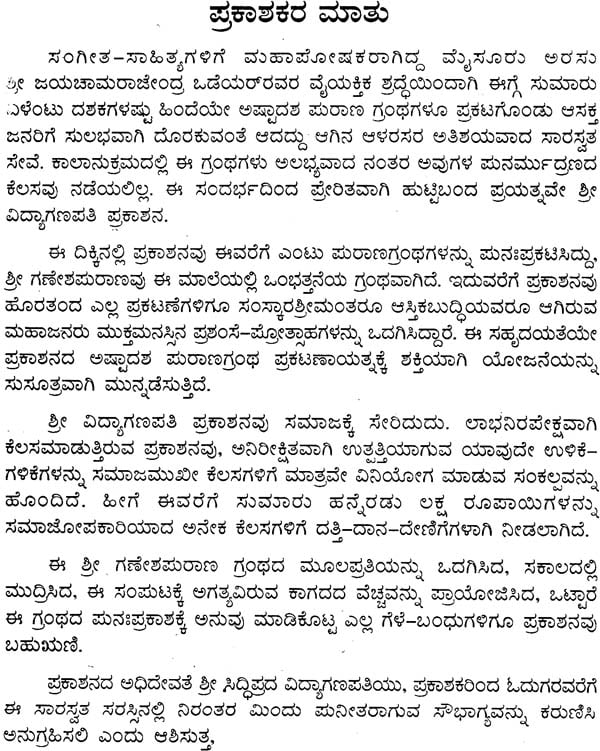Mythology, depicted in above sculpture, is described in the Vishnu Purana. Suvarnabhumi Airport, Bangkok The composition date of Vishnu Purana is unknown and contested, with estimates widely disagreeing. Some proposed dates for the earliest version of Vishnu Purana by various scholars include: • (1908): 400-300 BCE, • (1925): ~9th-century, • (1932): possibly early 1st millennium, but states Rocher, he added, 'it is no more possible to assign a definite date to the Vishnu Purana than it is for any other Purana'. • Rajendra Chandra Hazra (1940): 275-325 CE • (1951): 700-300 BCE, • Roy (1968): after the 9th century. • (1864): acknowledged that the tradition believes it to be 1st millennium BCE text and the text has roots in the Vedic literature, but after his analysis suggested that the extant manuscripts may be from the 11th century.
Rocher states that the 'date of the Vishnu Purana is as contested as that of any other Purana'. References to Vishnu Purana in texts such as Brihadvishnu whose dates are better established, states Rocher, suggest that a version of Vishnu Purana existed by about 1000 CE, but it is unclear to what extent the extant manuscripts reflect the revisions during the 2nd millennium. Galanin zajchik noti. Vishnu Purana like all Puranas has a complicated chronology.
Roxio creator 2012 pro serial key download torrent. Dimmitt and van Buitenen state that each of the Puranas including the Vishnu Purana is encyclopedic in style, and it is difficult to ascertain when, where, why and by whom these were written: As they exist today, the Puranas are a stratified literature. Each titled work consists of material that has grown by numerous accretions in successive historical eras. Thus no Purana has a single date of composition. (.) It is as if they were libraries to which new volumes have been continuously added, not necessarily at the end of the shelf, but randomly. The Vishnu Purana includes several chapters in book 3 on rites of passage from birth through death. Included are chapters on cremation rites (above).

After presenting the emergence of Vedic schools, the text presents the ethical duties of the four in chapter 2.8, the four (stages) of the life of each human being in chapter 2.9, the rites of passage including wedding rituals in chapters 2.10 through 2.12, and (rites in honor of ancestors, faith) in chapters 2.13 through 2.16. The Vishnu Purana asserts that the Brahmin should study, worship gods and perform libations on behalf of others, the should maintain arms and protect the earth, the should engage in commerce and farming, while the should subsist by profits of trade, service other varnas and through mechanical labor. The text asserts the ethical duties of all is to do good to others, never abuse anyone, never engage in calumny or untruth, never covet another person's wife, never steal another's property, never bear ill-will towards anyone, never beat or slay any human being or living being. Be diligent in the service of the gods, sages and, asserts the Purana, seek the welfare of all creatures, one's own children and of one's own soul. Anyone, regardless of their varna or stage of life, who lives a life according to the above duties is the best worshipper of Vishnu, claims the Vishnu Purana. Similar statements on ethical duties of man are found in other parts of Vishnu Purana.
The Vishnu Sahasranama as found in the Anushasana Parva of the Mahabharata is the most popular version of the 1,000 names of Vishnu. Other versions exists in the Padma Purana, Skanda Purana and Garuda Purana. There is also a Sikh version of the Vishnu Sahasranama, found in the text Sundar Gutka.
The text describes in chapter 2.9, the four stages of life as (student), (householder), (retirement) and (renunciation, mendicant). The text repeats the ethical duties in this chapter, translates Wilson. The chapters on Shraddha (rites for ancestors) describe the rites associated with a death in family, the preparation of the dead body, its cremation and the rituals after the cremation.
Top Articles
- Fleet Maintenance Pro 14 Serial Numbers
- Antares Autotune Evo Crack Download
- Emulyator Hasp Klyucha 1s 83 Windows 81 64 Bit
- Kod Dlya Sims 3 Na Otmenu Beremennosti
- Keil C 4 Keygen Serial
- Portrait Professional 11 Full Crack Keygen
- Mg Soft Mib Browser License Key Download
- Bosch Esi Tronic 2014 Keygen Serial
- Ozeki 6 4 Keygen Serial